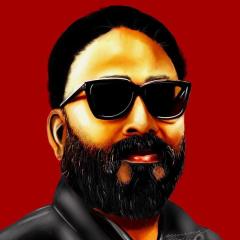எதிரியையும் மதித்த எங்கள் தலைவன்..! ஒரு வீரனால் மட்டுமே இன்னொரு வீரனை இனம் காண முடியும்

By
மீனா
in எங்கள் மண்
-
Tell a friend
-
Topics
-
Posts
-
ஒரு கூட்டணி அமைத்ததன் பிறகு தனித்து நிற்கும் போது எல்லா கட்சிகளினும் ஆதரவு குறைத்து உள்ளது உதாரணம் வைகோ விசயகாந்த். இவர்களுக்கு கூட்டணி அமைக்க முதல் இருந்த ஆதரவு வீதம் கூட்டணி உடைந்த பிற்பாடு இல்லை சடுதியாக மிகவும் குறைத்து விட்டது சீமானும். கூட்டணி அமைத்து அதன் பின் கூட்டணி உடைத்து தனியாக நிற்கும் போது ஆதரவு குறையும் இதை தான் சொன்னேன் சீமான் தலைமையில் எந்தவொரு கட்சியும். கூட்டணி அமைக்காது அப்படி அமைக்கப்படும் போது சீமான் கட்சியின் ஆதரவு குறையாது சீமான் அல்லது வேறு கட்சி தலைவர்கள் இன்னொரு கட்சியின் தலைமையில் கூட்டணி அமைத்து அது உடைத்து அடுத்து வரும் தேர்தலில் தனியாக போட்டி இடும் போது பொதுவாக அனைத்து கட்சியின் ஆதரவு குறையும் கூட்டணி அமைத்து உடைந்த பிற்பாடு சின்ன கட்சிகளின் எதிர்காலம் எப்படி இருக்கும்?? இருக்கிறது??
-
By ஈழப்பிரியன் · Posted
ஆகா தில்லை எனக்கு 21 வயது ஐஸ்வரியாவை ரொம்ப ரொம்ப பிடித்திருக்கு. ஐஸ்வரியா வரியா வரியா. -
By ஈழப்பிரியன் · Posted
இதைத் தான் நானும் விரும்புகிறேன். ஆனாலும் ஊழல் இல்லாமல் மக்களுக்கு சேவையாற்ற யார் இருக்கிறார்கள்? காட்டுங்க கை கோர்க்கிறேன் என்கிறார். இதுக்கு யாரிடமும் பதில் இல்லை. அடுத்தடுத்த தேர்தல்களில் தேவைகளை உணர்ந்து செயல்படலாம். இதுவரை நாம்தமிழர் வாக்குவங்கி கூடிக் கொண்டு தானே போகுது? எப்படி 3 வீதம் என்று கணித்தீர்கள்? -
By ஈழப்பிரியன் · Posted
அவருக்கு பெரியமனசு. எப்படி அடித்தாலும் தாங்குவார். -
முதலில் நான் தமிழ்நாட்டில் எந்த கட்சிக்கும்,..எந்த தலைவருக்கும். எதிரானவன். இல்லை என்பதை பணிவு அன்புடன் தெரிவித்துக்கொள்கிறேன் .....இங்கு எழுதுவது கருத்துகள் மட்டுமே [அதாவது நடைமுறையில் சாத்தியம் எது என்று நான் கருதுவது ]. தமிழ்நாட்டில் எந்தவொரு தலைவரும் தனித்து நின்று வெல்ல முடியாது ..இது சீமானுக்கும். பொருந்தும் எந்த கட்சியும். வெல்ல வேணும் என்றால் கூட்டணி அவசியமாகும் ...செல்வாக்கு உள்ள கட்சிகளின் கூட்டணி அமைத்தால். மட்டுமே வெல்லலாம். சீமான் தலைமையில் எந்த கட்சியும். கூட்டணி அமைக்கப்போவதில்லை ....சரியா? அல்லது பிழையா?? சீமான் வேறு கட்சிகளின் தலைமையில் கூட்டணி அமைக்க முடியும்,.....ஆனால் அடுத்த அடுத்த தேர்தலில் அவரது ஆதரவு குறைத்து விடும் 3% கூட வரலாம்”
-
-
Our picks
-
மனவலி யாத்திரை.....!
shanthy posted a topic in கதை கதையாம்,
மனவலி யாத்திரை.....!
(19.03.03 இக்கதை எழுதப்பட்டது.2001 பொங்கலின் மறுநாள் நிகழ்ந்த ஒரு சம்பவத்தின் நினைவாக பதிவிடப்பட்டது இன்று 7வருடங்கள் கழித்து பதிவிடுகிறேன்)
அந்த 2001 பொங்கலின் மறுநாள் அவனது குரல்வழி வந்த அந்தச் செய்தி. என் உயிர் நாடிகளை இப்போதும் வலிக்கச் செய்கிறது. அது அவனுக்கும் அவனது அவர்களுக்கும் புதிதில்லைத்தான். அது அவர்களின் இலட்சியத்துக்கு இன்னும் வலுச்சேர்க்கும். ஆனால் என்னால் அழாமல் , அதைப்பற்றி எண்ணாமல் , இனிவரும் வருடங்களில் எந்தப் பொங்கலையும் கொண்டாட முடியாதபடி எனக்குள் அவனது குரலும் அவன் தந்த செய்திகளும் ஒலித்துக் கொண்டேயிருக்கும்.-
- 1 reply
Picked By
மோகன், -
-
பாலியல் சுதந்திரமின்றி பெண்விடுதலை சாத்தியமில்லை
mooki posted a topic in சமூகச் சாளரம்,
பாலியல் சுதந்திரமின்றி பெண்விடுதலை சாத்தியமில்லை - செல்வன்
Friday, 16 February 2007
காதலர் தினத்தை வழக்கமான தமது அரசியல் நிலைபாடுகளை பொறுத்து அணுகும் செயலை பல்வேறு தரப்பினரும் உற்சாகமாக செய்து வருகின்றனர்.கிரீட்டிங் கார்டுகளையும், சாக்லடுகளையும் விற்க அமெரிக்க கம்பனிகள் சதி செய்வதாக கூறி காம்ரேடுகள் இதை எதிர்த்து வருகின்றனர்.அமெரிக்க கலாச்சாரத்தை திணிக்க முயற்சி நடப்பதாக கூறி சிவசேனாவினரும் இதை முழுமூச்சில் எதிர்க்கின்றனர். தமிழ்நாட்டில் பாமக ராமதாஸ் இதை கண்டித்து அறிக்கை விட்டுள்ளார். பாகிஸ்தானிலும், அரபுநாடுகளிலும் இதை எதிர்த்து பத்வாக்கள் பிறப்பிக்கப்பட்டு அதை மீறி இளைஞர்கள் இதை கொண்டாடியதாக செய்திகள் வந்துள்ளன.-
-
- 20 replies
Picked By
மோகன், -
-
ஒரு சித்தர் பாடல்
பண்டிதர் posted a topic in மெய்யெனப் படுவது,
எனக்குப் பிடித்த ஒரு சித்தர் பாடல் (எந்தச் சித்தர் என்று மறந்து விட்டேன். கட்டாயம் தேவை என்றால் சொல்லுங்கள் எனது ஓலைச் சுவடிகளை புரட்டிப்பார்த்து பின்னர் அறியத் தருகிறேன்)
நட்ட கல்லைத் தெய்வம் என்று நாலுபுட்பம் சாத்தியே
சுற்றி வந்து முணுமுணென்று கூறுமந்த்ரம் ஏனடா
நட்ட கல்லும் பேசுமோ நாதன் உள்ளிருக்கையில்
சுட்ட சட்டி தட்டுவம் கறிச்சுவை அறியுமோ?
பொருள்:
சூளையில் வைத்துச் சுட்டுச் செய்த மண் பாத்திரத்தில் வைக்கும் கறியின் சுவை எப்படியானது என்று அந்தப் பாத்திரத்துக்கு விளங்குமா? அது போல, எம்முள்ளே எருக்கும் இறைவனை நீ அறியாமல் ஒரு கல்லினுள் கடவுள் இருப்பதாக நம்பி வெறும் கல்லை அராதித்து வழிபடுகிறாய்.-
- 7 replies
Picked By
மோகன், -
-
கடவுள் இருக்கிறாரா.............?
வானவில் posted a topic in மெய்யெனப் படுவது,
களத்தில் தற்போது சமயம் சம்ம்பந்தமாக பெரியா கருத்து பரிமாற்றம் நடக்கிறது, அங்கே கருத்தாடு பெரியவர்களே, அறிஞோர்களே உங்களால் இறைவன் இருக்கார் என்று ஆதாரத்துடன் நிரூபிக்க முடியுமா...........? முடிந்தால் நிரூபியூங்கள், நிரூபித்து விட்டு உங்கள் கருத்து மோதலை தொடருங்கள்-
-
- 46 replies
Picked By
மோகன், -
-
சமூகத்துக்கு பயனுடைய கல்விநிலை எது?
narathar posted a topic in பேசாப் பொருள்,
சமூகத்துக்கு பயனுடைய கல்விநிலை எது?
பேராசிரியர் சோ. சந்திரசேகரன்
இன்று நாட்டில் உள்ள கல்விமுறையையும் அதற்கு அப்பால் உள்ள கல்வி ஏற்பாடுகளையும் நோக்குமிடத்து, பல்வேறு கல்வி நிலைகளை இனங்காண முடியும். அவையாவன: ஆரம்பக்கல்வி, இடைநிலைக் கல்வி, பல்கலைக்கழகக் கல்வி உள்ளடங்கிய உயர் கல்வி, பாடசாலையில் வழங்கப்படும் (1-11 ஆம் வகுப்பு வரை) பொதுக்கல்வி, தொழில்நுட்பக்கல்வி, வளர்ந்தோர் கல்வி என்பன, இவை தவிர கருத்தாக்க ரீதியாக முறைசாராக் கல்வி, வாழ்க்கை நீடித்த கல்வி, தொடர்கல்வி எனப் பலவற்றை இனங்காண முடியும். இவற்றில் ஆரம்பக்கல்வி, இடைநிலைக்கல்வி, உயர்கல்வி என்னும் கல்வி நிலைகளே முறைசார்ந்த (Formal) கல்வியின் பிரதான நிலைகள் அல்லது கூறுகளாகும்.
-
- 5 replies
Picked By
மோகன், -
-








Recommended Posts
Archived
This topic is now archived and is closed to further replies.